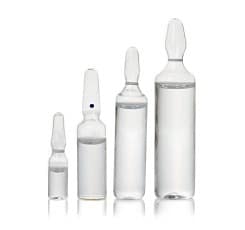Analysis of bleeding events after central venous catheter placement

“Major bleeding complications following CVC placement in TTP is uncommon and most likely related to technical challenges” Haque et al (2021).
Cost of central venous catheter training simulation

“The aim of this study was to perform a value analysis of published central line SBE and develop a refined method of studying central line SBE” Iglesias et al (2021).
Comparing central venous blood gas to arterial blood gas

“Central venous blood gas (VBG) is a potentially more accessible alternative to ABG sampling” Chong et al (2021).
Vascular access device securement for oncology patients

“Living with a chronic illness requiring frequent infusions is difficult enough-worrying about the device being dislodged should not be an additional stressor” Hawes (2021).
Infusion set replacement interval study on CRBSI – Full Text

“Infusion set use can be safely extended to 7 days with resultant cost and workload reductions” Rickard et al (2021).
Rapid Central Vein Assessment protocol to avoid venous cut-down

“We aimed to report on CVC in a 5-year-old child who had previously undergone bilateral internal jugular venous access by the open venous cut-down technique, in order to highlight the importance of performing the Rapid Central Vein Assessment protocol” Uzumcugil et al (2021).
Catheter management strategies for suspected CRBSI

“The objective of this study was to determine the incidence, risk factors, and mortality attributable to CRBSIs in those patients” Zhong et al (2021).
Midline catheters as an alternative to central catheter placement

“Midline catheters allow for greater duration of access when compared with PVCs and avoid the critical complications associated with CVCs” Carr et al (2021).
New starter induction improves first time vascular access success – Full Text

“To assess the impact of a prolonged induction period on the technical abilities of interns embarking on their clinical careers” Foley et al (2021).
Biofilm and central catheter-related bloodstream infections

“The use of high-dose antiseptics or antibiotics for long durations inside the catheter and hub (antibiotic/antiseptic lock) can suppress biofilm” Wolcott (2021).
Use of dry dressings for central venous access devices to decrease CLABSI

“In this pre-post study, a simple change in dressing type was implemented, resulting in a significant reduction in the CLABSI rate” Paquet et al (2021).
Vascular access care in patients with multimorbidity

“Multimorbid patients with DIVA have a higher rate of complications as well as requiring more catheters and more placement attempts” Armenteros-Yeguas et al (2021).
Central venous catheter care mobile phone application for graduate nurses

“To develop and test a mobile phone application (app) for graduate nurses on the use and care of central venous catheters” Huang et al (2021).
Tunneled PICC placement in adult and pediatric population – Full Text

Abstract: Vascular access procedures are crucial for the management of various critically ill pediatric and adult patients. Venous access is commonly performed in the form routine as well as tunneled peripherally inserted central catheters (PICC). These venous accesses are commonly used in emergency, surgical as well as ICU settings, for various infusions, total parenteral nutrition, […]
Double-checking and medication administration errors – Full Text

“Primed double-checking was highly prevalent but compared with single-checking conferred no benefit in terms of reduced errors or severity” Westbrook et al (2021).
Risk factors for catheter related thrombosis during OPAT

“Identification of modifiable vascular access related predictors of CRT should assist with patient risk stratification and guide risk reduction strategies” Ingram et al (2021).
Factors associated with umbilical venous catheter malposition

“The use of larger size UV catheters and increasingly invasive respiratory support were risk factors associated with higher incidence of UVC malposition” Soonsawad et al (2021).
Ethanol lock therapy as central venous catheter salvage strategy

“We aimed to evaluate the efficacy and safety of ethanol lock therapy (ELT) as catheter salvage strategy in children with central-line-associated bloodstream infection (CLABSI), and to identify factors associated with treatment failure” Ashkenazi-Hoffnung et al (2021).
Reverse tapered versus non-tapered PICC – Full Text

“This narrative review analyzes some aspects of the use of reverse tapered PICCs, also paying attention to some possible undesirable effects that have arisen from the introduction into clinical practice of new subcutaneous systems of securement of PICCs to the skin” Bertoglio (2021).
Blood pressure measurement and peripheral IV complications

“Non-invasive blood pressure monitoring did not increase complications or shorten PIVCs indwelling time among renal transplant recipients” Tan et al (2021).
Sonographic evaluation of peripheral IV associated thrombophlebitis

“Our study found that the increased proportion of catheter relative to vein size and steeper catheter tip angle increased the risk of thrombophlebitis” Mielke et al (2021).
Glass particle contamination from drug ampoules – Video Link

“The aim of this study was to determine the level of glass particle contamination from medical ampoules during breakage in nursing practice and their removal by filtration” Erkoc Hut and Yazici (2021).
Subcutaneous tunneling technique to improve PICC outcomes – Full Text

“The subcutaneous tunneling technique can improve PICC placement by reducing complications and costs of maintenance with better patient comfort during placement” Xiao et al (2021).
Reducing risk of cross-contamination from medical tapes – Full Text

“The time has come to establish national guidelines to help reduce the risk of cross-contamination from medical tapes” Bernatchez and Schommer (2021).
Validation of Michigan risk score and D-dimer to PICC-related thrombosis

“MRS and age-adjusted D-dimer have low accuracy to predict PICC-UEVT. Further studies are needed” Kang et al (2021).
Hospital-acquired infections in critically-ill COVID-19 patients

“Critically-ill COVID-19 patients are at high risk for HAIs, especially VAPs and BSIs due to MDR organisms” Grasselli et al (2021).
Lifespan of peripheral IV short catheters in hospitalized children

“In this study, 75% of peripheral indwell catheters remained free from complications for 74 h, the other extreme 25% of these patients could remain up to 393 h” Elizabeth Gómez-Neva et al (2021).
Taurolidine for the prevention of CRBSI in children – Full Text

“Lock therapy with a taurolidine-based solution prevented CRBSIs when it was begun immediately after installing the CVC, in contrast with an old CVC with a history of recurrent CRBSIs” Jordán et al (2021).
The impact of blood sampling from peripheral IV cannula

“There was no significant difference in haemolysis rates associated with sampling blood from a PIVC compared with venepuncture” Jacob et al (2021).
Erroneous placement of central venous catheters in subclavian artery

“Retrieval of a misplaced CVC within a subclavian artery using the percutaneous closure device Angio-Seal™ is quite safe and effective” Verloh et al (2021).

